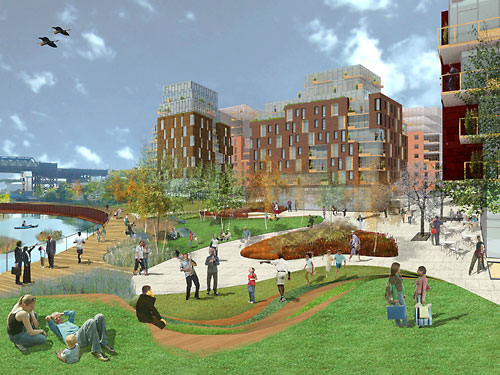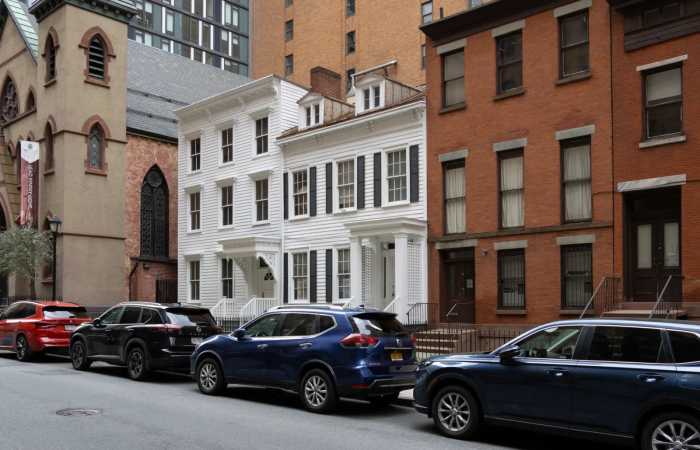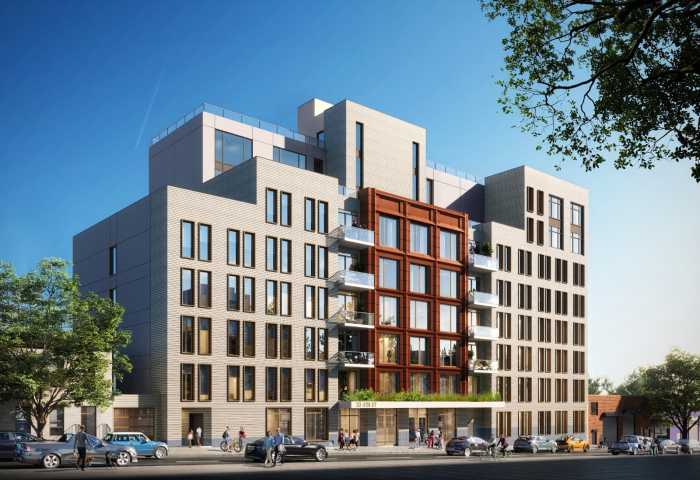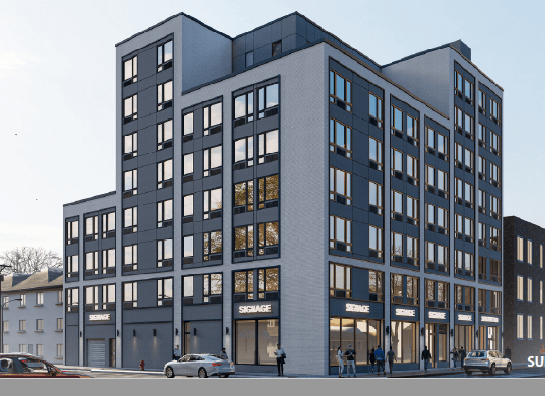The city has chosen a developer to turn a contaminated Gowanus property into hundreds of apartments and a waterfront esplanade — and the winning bidder is already looking to expand the scope of the project.
The Gowanus Green Partnership — a collaboration by the Hudson Companies, the Gowanus Canal Community Development Corp., the Fifth Avenue Committee, the Bluestone Organization and the Jonathan Rose Companies — plans to build 774 units of mixed-income housing, storefronts, community group space and an open area on the so-called “Public Place” site, a former gas plant roughly bounded by Smith, Fifth and Huntington streets and the canal. The group is also negotiating with the owner of a warehouse just to the south of the Public Place site, sources told The Brooklyn Paper — a deal that could almost double the size of the project.
Department of Housing Preservation and Development Commissioner Shaun Donovan called the approved Partnership design (pictured) “a precedent for future developments by integrating sustainable design features with an impressive level of affordability.”
It will have to be; toxins released by the gas plant decades ago have left the site heavily polluted, and chemicals still leak into the canal. The state is overseeing the site’s cleanup, which must be at least partially completed before construction can begin.
The neighborhood’s industrial legacy made the Gowanus an improbable setting for redevelopment until Mayor Bloomberg began pushing to redevelop the area along the stinky canal. Since then, developers have gobbled up lots on both sides of the channel in anticipation of a zoning change that would allow potentially lucrative residential construction.
A Hudson Companies partner said his group would not have been interested in the site were it not for a show of commitment to the Gowanus by the city and a new requirement that National Grid, the international energy giant that now owns Keyspan, will pay for and undertake the two-year clean-up.
“We tend to shy away from sites that have been contaminated in some severe way,” said Alan Bell, but “[Public Place] has a long history and the city is really committed to getting this cleaned up.”
Construction could begin in 2010 and finish in 2014. There will be 541 sub-market-rate housing units, including 120 apartments for senior citizens; open space; a boathouse; a promenade; a waterfront bar and restaurant; and retail strip along the Smith Street side of the nine-building complex.
Not so fast, says Community Board 6 District Manager Craig Hammerman, because the project must now go through the city’s lengthy land-use review process to get the necessary zoning changes.
“We don’t know what’s going to get built. These are just concepts,” Hammerman said, suggesting the current plan, though popular, could be significantly revised before getting final approval.

























